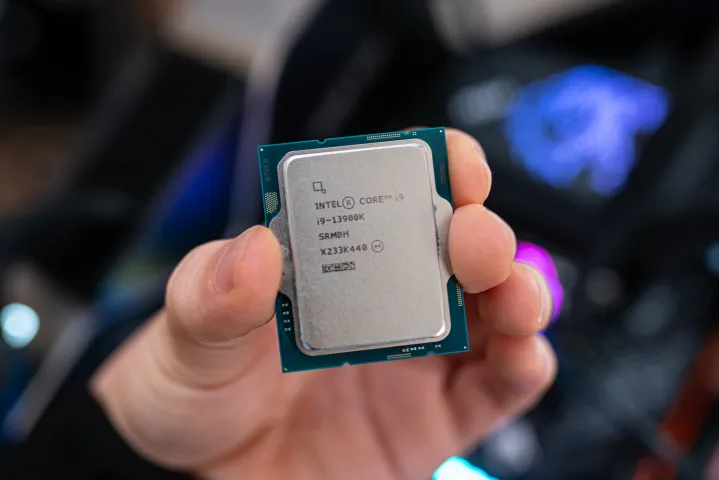If you’re just learning about the world of computers and electronics, the terminology used to refer to different parts can be confusing. One component term you may have encountered is “CPU,” which stands for “central processing unit.”
CPUs reside in almost all devices you own, whether it’s a smartwatch, a computer, or a thermostat. They are responsible for processing and executing instructions and act as the brains of your devices. Here, we explain how CPUs interact with other parts of your devices and what makes them so integral to the computing process.
What makes a CPU a CPU?

The CPU is the core component that defines a computing device, and while it is of critical importance, the CPU can only function alongside other hardware. The silicon chip sits in a special socket located on the main circuit board (motherboard or mainboard) inside the device. It is separate from the memory, which is where information is temporarily stored. It is also separate from the graphics card or graphics chip, which renders the video and 3D graphics that are displayed on your screen.
CPUs are made by arranging billions of microscopic transistors onto a single computer chip. These transistors enable the CPU to perform the computations necessary for executing programs stored in your system’s memory. Functioning as tiny switches, they alternate between on and off states, conveying the binary ones and zeros that underlie all your actions on the device, whether it’s watching videos or composing an email.
One of the most common advancements in CPU technology is in making those transistors smaller and smaller. That has resulted in the improvement in CPU speeds over the decades, often referred to as Moore’s Law.
In the context of modern devices, a desktop or laptop has a dedicated CPU that performs many processing functions for the system. Mobile devices and some tablets instead utilize a system on a chip (SoC) which is a chip that packages the CPU alongside other components. Intel and AMD both offer CPUs with graphics chips and memory stored on them, too, meaning they can do more than just standard CPU functions.
What does a CPU actually do?

At its core, a CPU takes instructions from a program or application and performs a calculation. This process breaks down into three key stages: fetch, decode and execute. A CPU fetches the instruction from RAM, decodes what the instruction actually is, and then executes the instruction using relevant parts of the CPU.
The executed instruction, or calculation, can involve basic arithmetic, comparing numbers, performing a function, or moving numbers around in memory. Since everything in a computing device is represented by numbers, you can think of the CPU as a calculator that runs incredibly fast. The resulting workload might start up Windows, display a YouTube video, or calculate compound interest in a spreadsheet.
In modern systems, the CPU acts like the ringmaster at the circus by feeding data to specialized hardware as it is required. For example, the CPU needs to tell the graphics card to show an explosion because you shot a fuel drum in a game or tell the solid-state drive to transfer an Office document to the system’s RAM for quicker access.
Cores, clocks, and costs

Originally, CPUs had a single processing core. Today’s modern CPU consists of multiple cores that allow it to perform multiple instructions at once, effectively cramming several CPUs on a single chip. Entry-level processors today have between two and four cores, while six to eight cores is more mainstream in gaming devices and PCs. High-end models can have anywhere up to 32 cores, and professional hardware can go beyond that.
Many processors also employ a technology called simultaneous multithreading. Imagine a single physical CPU core that can perform two lines of execution (threads) at once, thereby appearing as two “logical” cores on the operating system end. These virtual cores aren’t as powerful as physical cores because they share the same resources, but overall, they can help improve the CPU’s multitasking performance when running compatible software.
Clock speed is prominently advertised when you are looking at CPUs. This is the “gigahertz” (GHz) figure that effectively denotes how many instructions a CPU can handle per second, but that’s not the whole picture regarding performance. Clock speed mostly comes into play when comparing CPUs from the same product family or generation. When all else is the same, a faster clock speed means a faster processor. However, a 3GHz processor from 2010 will deliver less work than a 2GHz processor from 2020, due to the newer model’s more advanced underlying silicon.
How much should you pay for a CPU? For a general outline, unless you’re a hardcore gamer or someone looking to edit videos, you don’t need to spend more than $200 to $300. You can help keep the cost down by avoiding the latest hardware and instead sticking to a recent generation of CPU.
For Intel CPUs, that means 12th, or 13th-generation chips. You can determine their generation by the product name. For instance, the Core i7-10700K is an older 10th-generation chip, while the Core i5-13600K is a newer 13th-generation chip.
AMD does something similar with its Ryzen CPUs: The Ryzen 9 3950X is a 3rd-generation chip, while the Ryzen 7 5700X is the fourth-generation CPU based on the company’s Zen 3 architecture. Ryzen 4000 was released as a laptop chip line and in APU form with very limited availability on desktops through system builders. With that in mind, it’s arguable whether the Ryzen 7000 is (technically) the fifth generation of AMD Ryzen CPU, but it’s the latest, and most recently, AMD has unified its laptop, APU, and desktop platforms under the Ryzen 7000 banner.
How important is the CPU?
These days, your CPU isn’t as important for overall system performance as it once was, but it still plays a major role in the response and speed of your computing device, and without one, it wouldn’t work at all. Gamers will generally find a benefit from higher clock speeds, while more serious work such as CAD and video editing will see an improvement from a higher CPU core count.
You should bear in mind that your CPU is part of a system, so you want to be sure you have enough RAM and have fast storage that can feed data to your CPU. Perhaps the largest question mark will hang over your graphics card as you generally require some balance within your PC, both in terms of performance and cost.
Now that you understand the role of a CPU, you are in a better position to make an educated choice about your computing hardware. Use our CPU buying guide to learn more about the best chips currently available. Once you’ve done that, check the top options in our lists of the best Intel processors and the best AMD processors available right now.





